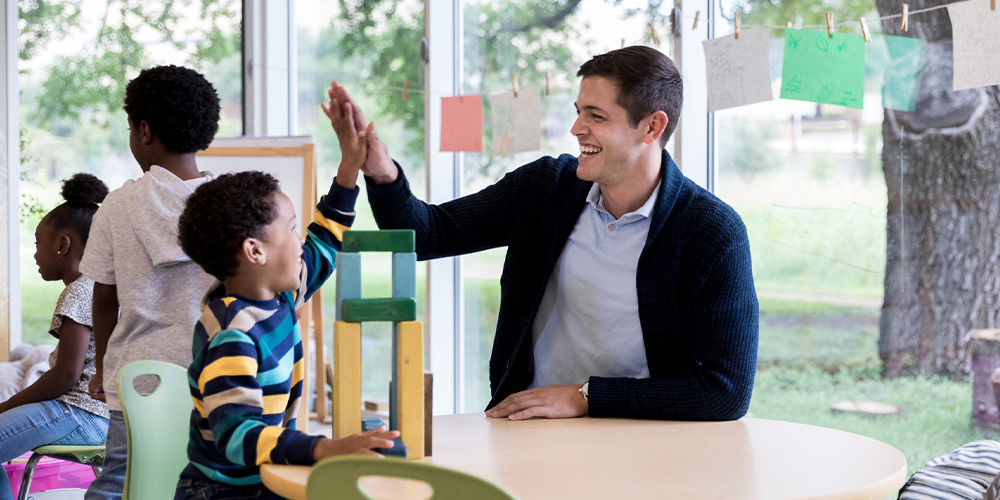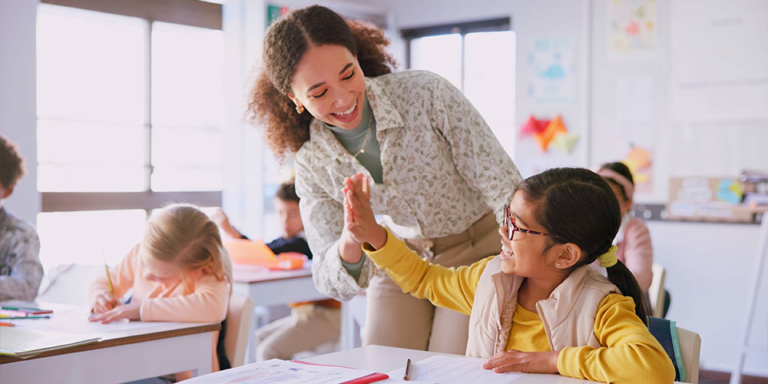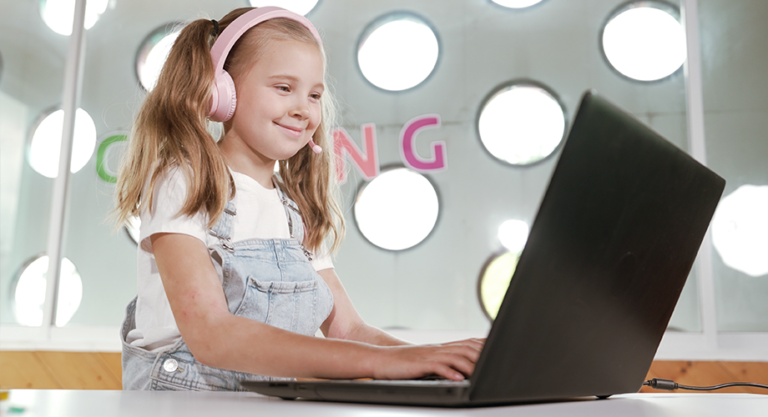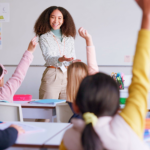You’ve probably heard it before or even said it to your students: “Fail” isn’t a negative word; it’s just an acronym for “first attempt in learning.” Trying something new and having to recalibrate is an essential part of life. In fact, the scientific method is built on the idea!
Still, it’s hard to convince students to shift their mindsets and understand that playing it safe won’t lead them to academic success. That’s why it’s important for you, as a teacher, to understand the benefits of “failure” and how to walk your students through this vital part of the learning process.
Failure and Reflection: A Learner’s Superpowers
Reflection is the middle step between failure and success. Whether it’s taking a test, writing a paper, or completing homework, students get much more out of a learning experience when they receive quality feedback and dedicate time to reflecting on how they performed. And research backs this up!
Waterford.org shares the following findings based on studies on education and failure:
- Failure leads to better learning. In a 2018 Toronto study, students were divided into two groups: One group was told to memorize some information before taking a test on it, and the other group got no information beforehand, but instead guessed and got feedback on their answers. The result? The second group actually performed better than the first!
- Reflection is a vital part of the learning process. The implication of the Toronto study is that when students have time to (a) try to make sense of new information and (b) reflect on what they got right or wrong, then their learning improves.
- Making mistakes and reflecting can strengthen critical thinking skills. Another study showed that it’s good for students’ critical thinking abilities to have time to make mistakes and reflect on what went wrong. And it makes sense why: When students learn how to see past their biases and spot problems in their own work and thinking, they’ll be able to use those same critical thinking skills when they engage with others’ work in the future.
- Self-reflection helps long-term learning and decision making. Let’s face it: Mistakes and the need to change tactics are normal parts of life. When students are able to practice these skills in low-stakes settings like school assignments, they’ll be prepared to solve bigger problems in the future with confidence and rationality.
Failure Turned to Discovery: A Step-by-Step Process
Many times, building in time for failure and reflection is not enough. On some topics, students might be able to intuitively learn from their mistakes, but more often than not, they need feedback to help them understand how to correct misunderstandings and improve their skills. In addition, they need frequent reinforcement on how to view failure properly and persevere to their next attempt.
To ensure students’ self-reflection is successful and productive, make sure to walk your students through these steps, from Cornell University:
- Involve students in setting up assessment criteria. Students need to know what success looks like, and moreover, they need to want to succeed. When you present an assessment, make sure to take time to get students’ buy-in on the criteria. Doing so will increase their sense of ownership and make them more likely to want to reflect after they’ve completed the assessment.
- Review assessment criteria before and after students turn in the assessment. The criteria might be a rubric or a set of clear instructions. Either way, it’s helpful to build in mechanisms to encourage students to review the criteria often. For example, you might require students to check off that they’ve fulfilled each criterion before they submit the assessment to make sure they’re aware of each learning goal.
- Teach students the proper mindset toward assessments. For many students, it’s difficult to break the mindset that the goal of an assessment is to achieve a certain score or certain grade. That’s why it’s crucial for you to frame assessments as one of many opportunities to master a skill, and reflection as an essential part of any assessment (not just a chore at the end).
- Help students check their inner dialogue. Self-doubt, perfectionism, and harsh self-criticism can plague even the most successful students. Toxic inner dialogue can trap students in negative emotions and keep them from looking at mistakes as an opportunity to learn. It can be challenging to get students to admit to these dark thoughts, but one way you can help is to model healthy inner dialogue. For example, as you work through an example on the white board, you might talk about your decision-making processes, and if you run into a problem, you might say, “Oops, that didn’t work. Let’s try something else instead.”
- Use an “assignment wrapper.” An assignment or exam wrapper builds reflection into any assessment by asking students short questions about their performance on the assessment. For example, the wrapper might ask students what they did to prepare for the assignment, how they feel they performed, and what they might do differently next time.
For many students (and even teachers), it’s challenging to reframe how they think about “failure” and instead be eager for opportunities to experiment and reflect.






